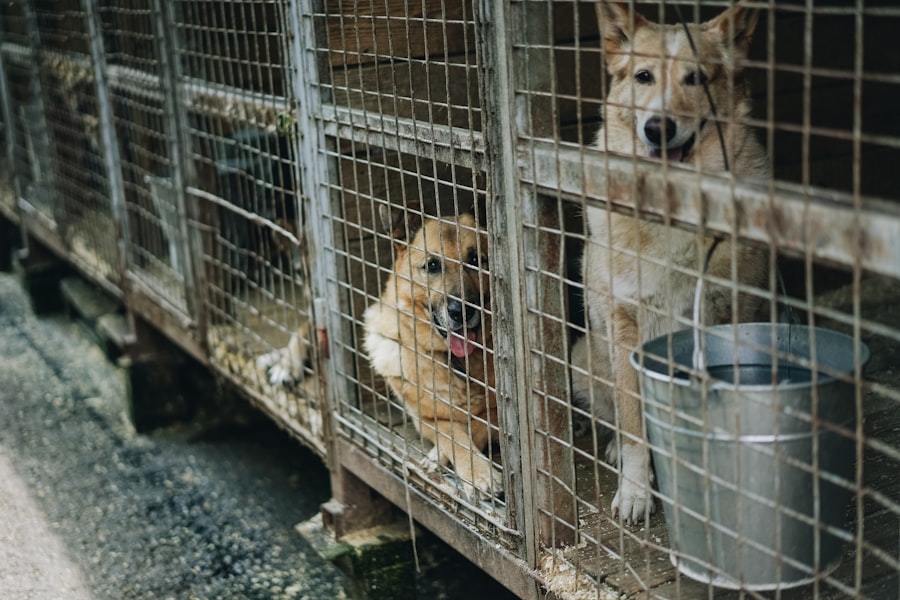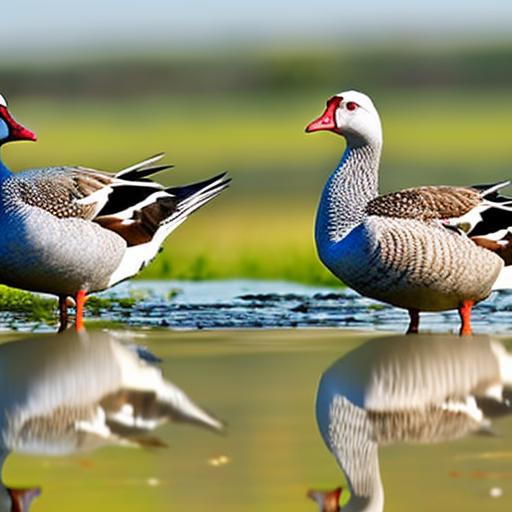Quail breeding has become an increasingly popular practice for both commercial and hobbyist breeders. With the rising demand for quail meat and eggs, the need for efficient and effective breeding methods has also grown. One such method that has gained traction in the industry is the use of quail breeding cage factories. These facilities are designed to provide a controlled environment for quail breeding, with a focus on maximizing space, efficiency, and productivity.
Quail breeding cage factories are equipped with specially designed cages that are tailored to the needs of quail. These cages are typically stacked to make the most of vertical space and are equipped with feeding and watering systems to ensure the birds’ needs are met. Additionally, these facilities often incorporate automated systems for egg collection, waste removal, and environmental control. The goal of these cage factories is to streamline the breeding process, minimize labor requirements, and maximize output. As the demand for quail products continues to rise, the role of quail breeding cage factories in meeting this demand is becoming increasingly important.
Table of Contents
- 1 The Importance of Proper Housing for Quail Breeding
- 2 Benefits of Using Cage Factories for Quail Breeding
- 3 Considerations for Selecting a Quail Breeding Cage Factory
- 4 Best Practices for Maintaining Quail Breeding Cages
- 5 Potential Challenges and Solutions in Quail Breeding Cage Factories
- 6 The Future of Quail Breeding Cage Factories
- 7 FAQs
- 7.1 What is a quail breeding cage factory?
- 7.2 What are the benefits of using quail breeding cages?
- 7.3 How are quail breeding cages manufactured in a factory?
- 7.4 What are the considerations for setting up a quail breeding cage factory?
- 7.5 Are there regulations and standards for quail breeding cage factories?
Key Takeaways
- Quail breeding cage factories are specialized facilities designed for efficient and effective quail breeding.
- Proper housing is crucial for quail breeding to ensure the health and productivity of the birds.
- Using cage factories for quail breeding offers benefits such as space optimization, waste management, and disease control.
- When selecting a quail breeding cage factory, considerations should include size, material, and ease of cleaning and maintenance.
- Best practices for maintaining quail breeding cages include regular cleaning, monitoring of bird health, and proper ventilation.
- Potential challenges in quail breeding cage factories include overcrowding, disease outbreaks, and equipment malfunctions, which can be addressed through proper management and proactive measures.
- The future of quail breeding cage factories looks promising, with advancements in technology and practices aimed at improving efficiency and sustainability in quail breeding.
The Importance of Proper Housing for Quail Breeding
Proper housing is essential for the successful breeding of quail. Quail are highly sensitive birds that require specific environmental conditions to thrive and reproduce. Inadequate housing can lead to stress, disease, and decreased productivity. Therefore, it is crucial to provide quail with a suitable living environment that meets their physiological and behavioral needs.
Quail breeding cage factories offer an ideal housing solution for quail breeding operations. The controlled environment provided by these facilities ensures that quail are kept in optimal conditions for breeding. The cages are designed to provide adequate space for the birds to move around and exhibit natural behaviors, while also maximizing the use of available space. Additionally, these facilities often incorporate environmental control systems to regulate temperature, humidity, and ventilation, creating a comfortable and stable living environment for the birds. Proper housing not only promotes the health and well-being of the quail but also contributes to higher reproductive success and overall productivity.
Benefits of Using Cage Factories for Quail Breeding
There are several benefits to using cage factories for quail breeding. One of the primary advantages is the efficient use of space. The stacked design of the cages allows breeders to maximize the use of vertical space, making it possible to house a large number of quail in a relatively small footprint. This is particularly beneficial for commercial operations where space may be limited or expensive.
Another benefit of using cage factories is the ability to automate various aspects of the breeding process. These facilities often incorporate automated feeding and watering systems, as well as egg collection and waste removal systems. This automation reduces the labor required for daily maintenance tasks, allowing breeders to focus on other aspects of their operation. Additionally, the controlled environment provided by cage factories can help minimize disease transmission and improve overall bird health.
Furthermore, cage factories offer a more controlled and predictable breeding environment compared to traditional housing methods. This can lead to higher reproductive success rates and increased productivity. Overall, the use of cage factories for quail breeding can result in higher efficiency, lower labor costs, and improved overall production.
Considerations for Selecting a Quail Breeding Cage Factory
When selecting a quail breeding cage factory, there are several important considerations to keep in mind. One of the most critical factors is the design and construction of the cages themselves. The cages should be well-constructed, durable, and easy to clean and maintain. Additionally, they should provide adequate space for the quail to move around comfortably and exhibit natural behaviors.
Another consideration is the level of automation and technology incorporated into the facility. Breeders should look for cage factories that offer automated feeding and watering systems, as well as egg collection and waste removal systems. These features can significantly reduce labor requirements and improve overall efficiency.
It is also essential to consider the environmental control capabilities of the facility. The ability to regulate temperature, humidity, and ventilation is crucial for creating a comfortable and stable living environment for the quail. Additionally, breeders should consider the overall size and layout of the facility, as well as its location and accessibility.
Finally, breeders should also take into account the reputation and track record of the cage factory manufacturer or supplier. It is essential to work with a reputable company that has a history of producing high-quality, reliable products. By carefully considering these factors, breeders can select a quail breeding cage factory that meets their specific needs and contributes to the success of their operation.
Best Practices for Maintaining Quail Breeding Cages
Proper maintenance of quail breeding cages is essential for ensuring the health and well-being of the birds, as well as maximizing productivity. Regular cleaning and sanitation are critical for preventing disease transmission and maintaining a hygienic living environment for the quail. Cages should be cleaned regularly using appropriate disinfectants, and bedding material should be replaced as needed.
In addition to cleaning, it is important to regularly inspect the cages for any signs of wear or damage. Any damaged or worn components should be repaired or replaced promptly to prevent injury to the birds or potential escapes. Furthermore, regular maintenance of automated systems such as feeding and watering equipment is essential to ensure they are functioning correctly.
Proper record-keeping is also an important aspect of cage maintenance. Breeders should keep detailed records of cleaning schedules, maintenance tasks, and any issues or concerns that arise with the cages or equipment. This information can help identify trends or potential problems and inform decision-making regarding maintenance and upgrades.
Overall, maintaining quail breeding cages requires a proactive approach that prioritizes cleanliness, safety, and functionality. By following best practices for cage maintenance, breeders can create an optimal living environment for their quail and contribute to the success of their breeding operation.
Potential Challenges and Solutions in Quail Breeding Cage Factories

While quail breeding cage factories offer many benefits, there are also potential challenges that breeders may encounter when using these facilities. One common challenge is managing environmental conditions within the facility, particularly temperature and humidity. Fluctuations in these factors can impact bird health and reproductive success. To address this challenge, breeders can invest in advanced environmental control systems that provide precise regulation of temperature and humidity levels.
Another challenge is disease management within the facility. The close quarters of cage factories can increase the risk of disease transmission among birds. Implementing strict biosecurity measures, such as regular disinfection protocols and restricted visitor access, can help minimize this risk. Additionally, breeders should monitor bird health closely and seek veterinary assistance at the first sign of illness.
Labor requirements can also be a challenge in quail breeding cage factories, particularly in larger operations. While automation can reduce some labor tasks, there is still a need for regular maintenance, monitoring, and care of the birds. To address this challenge, breeders can invest in training for staff members to ensure they are equipped with the necessary skills to manage daily tasks efficiently.
Finally, maintaining high levels of productivity over time can be a challenge in quail breeding cage factories. Overcrowding or excessive bird density within cages can lead to stress and decreased reproductive success. Breeders should carefully monitor stocking densities and make adjustments as needed to ensure optimal conditions for breeding.
By addressing these potential challenges with proactive solutions, breeders can maximize the benefits of quail breeding cage factories while minimizing potential drawbacks.
The Future of Quail Breeding Cage Factories
Quail breeding cage factories represent an innovative and efficient approach to quail breeding that offers numerous benefits for breeders. These facilities provide a controlled environment that maximizes space utilization, automates various aspects of the breeding process, and promotes higher productivity. As the demand for quail meat and eggs continues to grow, the role of quail breeding cage factories in meeting this demand will become increasingly important.
Moving forward, advancements in technology and facility design will likely further improve the efficiency and effectiveness of quail breeding cage factories. Enhanced environmental control systems, improved automation technologies, and innovative cage designs will contribute to higher levels of productivity and sustainability within these facilities.
Additionally, ongoing research into best practices for quail breeding within cage factories will continue to inform industry standards and guidelines. By staying informed about advancements in quail breeding technology and management practices, breeders can continue to optimize their operations and contribute to the growth and success of the quail breeding industry.
In conclusion, quail breeding cage factories offer a promising future for breeders seeking efficient, productive, and sustainable methods for quail production. By embracing these facilities and staying abreast of industry developments, breeders can position themselves for success in meeting the growing demand for quail products around the world.
If you’re interested in quail breeding and care, you might also want to explore the topic of what vegetables quails eat. Understanding their dietary needs is crucial for their health and productivity. Check out this informative article on Poultry Wizard to learn more about providing a balanced diet for your quails.
FAQs
What is a quail breeding cage factory?
A quail breeding cage factory is a facility that specializes in the mass production of cages specifically designed for breeding and raising quails. These cages are designed to provide a suitable environment for quails to lay eggs and raise their young.
What are the benefits of using quail breeding cages?
Quail breeding cages provide a controlled environment for quails to lay eggs and raise their young, which can lead to increased productivity and efficiency in quail breeding operations. These cages also help to protect the quails from predators and provide a clean and hygienic environment for the birds.
How are quail breeding cages manufactured in a factory?
Quail breeding cages are typically manufactured using materials such as galvanized steel wire or plastic. The cages are designed to be durable, easy to clean, and provide adequate space for the quails to move around. The manufacturing process may involve cutting, bending, welding, and assembling the cage components.
What are the considerations for setting up a quail breeding cage factory?
Setting up a quail breeding cage factory requires careful consideration of factors such as market demand, production capacity, equipment and machinery, raw material sourcing, and compliance with regulations and standards for animal welfare and hygiene. It is important to conduct thorough research and planning before establishing a quail breeding cage factory.
Are there regulations and standards for quail breeding cage factories?
Yes, there are regulations and standards that govern the manufacturing and operation of quail breeding cage factories. These may include guidelines for cage design, dimensions, materials, and hygiene practices to ensure the well-being of the quails and the quality of the eggs produced. Compliance with these regulations is essential for the ethical and sustainable operation of quail breeding cage factories.
Meet Walter, the feathered-friend fanatic of Florida! Nestled in the sunshine state, Walter struts through life with his feathered companions, clucking his way to happiness. With a coop that’s fancier than a five-star hotel, he’s the Don Juan of the chicken world. When he’s not teaching his hens to do the cha-cha, you’ll find him in a heated debate with his prized rooster, Sir Clucks-a-Lot. Walter’s poultry passion is no yolk; he’s the sunny-side-up guy you never knew you needed in your flock of friends!







